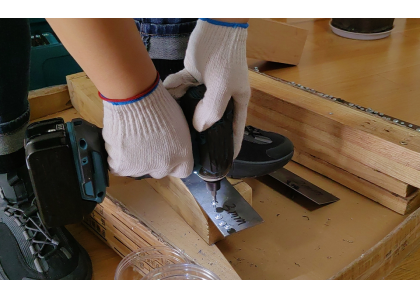
Screw tips:
Select an appropriate screwdriver head. For the "ten" type screws, the "ten" type driver head of the corresponding specification should be selected, and ensure that the driver head is close to the screw head notch for operation.
Maintain proper operating posture. When using the wind (electric) batch, it should be ensured that the shaft coincides with the axis of the screw and is perpendicular to the lock screw surface to avoid problems such as skew and shaking of the screw, so as to ensure that the screw can be tightly snapped.
Reasonably adjust the lock screw torque. The torque is usually set in the range of 0 ~ 5kgf (kg force).cm2 to obtain the appropriate tightening effect.
Control the electric batch locking time. The locking time should not be too long, and should be controlled within 10 seconds to prevent excessive wear or slip of the screw.
Pay attention to the usage of the batch header. Avoid using damaged bit heads to prevent fraying or poor locking of screw heads.
Bad condition and improvement measures:
Screw skew: This may be caused by the electrical batch falling not vertical, the batch head shaking or the locking surface is not horizontal. The improvement method is to adjust the verticality of the electric batch and screws, ensure that the locked surface is horizontal, and check whether the batch head is shaking, and repair it in time if there is a problem.
Screw head or missing head: this is usually caused by too small torque, long wind batch time or batch head shaking. Improvement measures are to increase the torque, control the locking time, and check whether the batch head is shaking, if necessary, can be sent to repair.
Beating the object: This may be caused by too much torque, too large screw diameter or the object is too thin. The improvement method is to appropriately reduce the torque, replace the screws with the right diameter, or increase the arm thickness of the object.
Slip wire: This is usually caused by too much torque, not letting go in time after the lock is in place or improper screw diameter. Improvement measures are to reduce the torque, ensure that the lock is in place after timely release, and replace the appropriate diameter of the screw.
The lock is not in place
When the air batch is locked down, the screw is not fully locked, resulting in a gap, which may be due to the torque setting is too small, or the locking time is too short, and the expected locking effect is not achieved.
Top white and foaming phenomenon
After the screw is locked, there is damage near the locked part, resulting in plastic blistering. This is usually caused by excessive torque, poor fit between the screws and the locked parts, or too long or too thick screws.
Paint removal problem of screw head
The black paint on the screw surface has worn away, revealing a metallic silver color. This may be due to the torque is too small, the locking time is too long, or the batch head is not perpendicular to the screw.
In addition, a bad head can also easily cause other problems, such as tooth breakage (missing teeth in the cross slot of the head, which may cause the screw to lock loosely, lock not in place or slip), as well as notching and wear (notching or wear on the cross slot of the head teeth will also affect the locking effect of the screw).